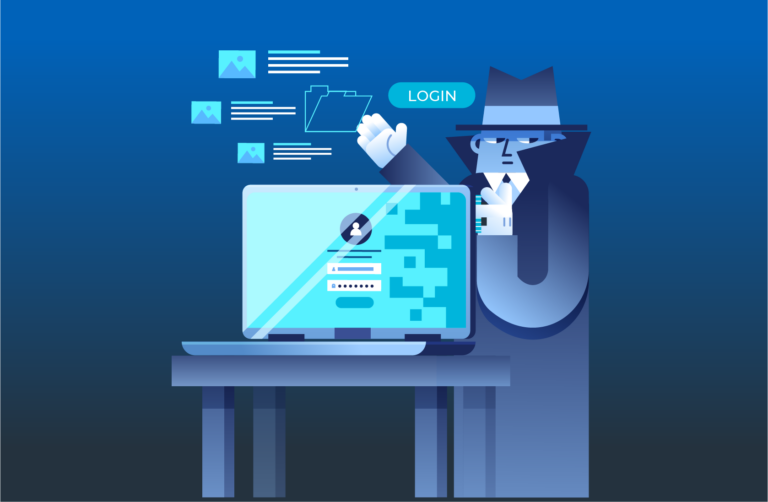The Dark Web is a Hidden Crisis for Long-Term Care
The dark web is a hidden crisis for long-term care. Yes, you read that correctly. In today’s interconnected world, healthcare information is a lucrative target for cybercriminals, especially on the dark web. While many in the healthcare industry are aware of the general dangers, the full extent of how and why cybercriminals exploit healthcare data still needs to be understood. This article will delve into the importance of healthcare information on the dark web, the specific risks to elderly patients’ data, and the critical steps long-term care facilities can take to prevent breaches and effectively respond if one occurs.
The Dark Web’s Appetite for Healthcare Information
Healthcare information is precious on the dark web for several reasons. Unlike credit card data, which can be quickly canceled and replaced, healthcare data contains long-lasting and deeply personal information. Healthcare data includes medical histories, social security numbers, insurance details, and personal identification information, making it a rich resource for a variety of malicious activities:
- Identity Theft: Cybercriminals can use stolen health records to create false identities, apply for loans, and open bank accounts.
- Insurance Fraud: With access to healthcare data, fraudsters can file fake insurance claims, obtain prescription medications, and receive medical services under false pretenses.
- Financial Exploitation: Detailed personal and financial information can be used to commit financial fraud, including unauthorized purchases and bank account takeovers.
- Medical Blackmail: Sensitive health information can be used to blackmail individuals, threatening to expose private medical conditions unless a ransom is paid.
- Social Engineering Attacks: Comprehensive healthcare records can be used to craft convincing phishing attacks and social engineering schemes, further compromising security.
Why Elderly Healthcare Data is a Higher Risk
Elderly patients are at higher risk for several reasons:
- Extensive Medical Histories: Elderly patients typically have a long history of medical treatments, diagnoses, and medications. This comprehensive medical data is valuable for identity theft and medical fraud.
- Multiple Insurance Policies: Older adults often have multiple layers of insurance coverage. These policies may include Medicare, Medicaid, supplemental private, and long-term care insurance. Each policy adds to the richness of the data set that cybercriminals can exploit.
- Stable Financial Backgrounds: Elderly individuals often have more established financial situations, including savings, retirement accounts, and home equity, making them attractive targets for financial fraud.
- Vulnerability to Fraud: Older adults may be more susceptible to scams and less familiar with modern cybersecurity practices, increasing their risk of exploitation.
The Importance of Protection in Long-Term Care Facilities
Due to these elevated risks, long-term care facilities must prioritize protecting their residents’ healthcare data.
Preventing Data Breaches
Robust access controls are crucial. The dreaded multi-factor authentication and role-based access controls ensure that only authorized personnel can access sensitive data. Data encryption for healthcare data, whether in transit or at rest, makes the information unreadable to unauthorized users. Remember to keep all systems updated with the latest security patches to protect against vulnerabilities.
Continuous training on cybersecurity and best practices, recognizing phishing attempts, and using strong passwords are vital in protecting your organization. And this flows into the physical security measures teams should take. Ensure physical security of sensitive data by controlling access to areas where data is stored, using lockable filing cabinets, and securing devices with sensitive information. If you know someone with a Post-it note on their computer monitor with their password on it, this is a physical security vulnerability.
Yes, having advanced security solutions like firewalls, intrusion detection, prevention systems, and antivirus software helps to defend against cyber threats, but you should regularly audit and assess risks. Conduct frequent security audits and risk assessments to identify and mitigate potential vulnerabilities.
Responding to a Breach
Despite best efforts, breaches can occur. If one occurs, an excellent first step is isolating affected systems to prevent further data loss. You’ll then need to identify the scope of the breach and determine what data was compromised. Promptly inform the affected individuals and relevant authorities as required by law. Investigate thoroughly to understand how the breach occurred and implement measures to prevent future incidents. Of course, you’ll also need to regularly update your security policies and incident response plans to address any new threats and vulnerabilities.
Exploiting healthcare information on the dark web is a significant threat, particularly for long-term care facilities and their elderly residents. By understanding the value of healthcare data to cybercriminals and implementing robust security measures, facilities can better protect sensitive information and respond effectively to breaches. We are committed to helping healthcare providers safeguard their data and uphold the highest cybersecurity and physical security standards at Think Anew.
